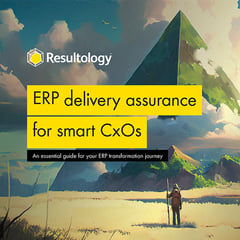I went to see a movie at the cinema recently - albeit reluctantly. I was dragged along as to be honest I am not a cinema goer. And, in this case I was even more reluctant due to the film showing.
Rather humbly, after seeing the film I had to confess that it wasn’t too bad in parts. It even made me laugh (and anyone who knows me will tell you that’s an achievement in itself!).
Although the movie was aimed at kids, the movie makers had cleverly worked out that it’s parents who take the kids to movies and - more importantly - that parents have the cash.
So, they decide to give just enough to the parents to keep them interested throughout the film.
They had done their research.
They knew their target audience of children, but understood that to really succeed they must appeal to parents as well.
In contrast, I went to a meeting a few weeks ago where the speaker was fairly ‘2D’. Both his presentation style and the content of the pack was clearly aimed at a select few people in the room, despite the fact an audience of over 30 people had turned out to hear him.
Following the performance there was a real contrasting array of comments.
….it was really boring and dull….
…the guy presenting was really interesting….
….I didn’t understand a word they said…..
…I feel really motivated after listening to that talk…
These are all comments from different people who went to the same presentation.
Which one is right?
Was the presenter really that boring?
How could they be so boring and yet motivational to others?
The mistake this presenter made was they didn’t appeal to the whole audience. Instead, they picked on a few people and designed the whole presentation just for them.
While that small chosen group will have walked away completely wowed, the rest of us left the room feeling bored, underappreciated and deflated.
So what could the speaker have done to improve things?
Well for starters he could have understood his audience better. That could have meant changing his presentation so that it would engage everyone there, or it could have meant only inviting that select few that the presentation had clearly been meant for.
After all, if his presentation only engaged a small percentage of the audience - however important that small percentage may be - was it really a success?
Why adoption is the most important metric in SAP success
My experience with the presentation reminded me of some of our SAP research.
In the SAP Success Report we discovered that adoption has the biggest impact on the success of your SAP programme.
But what does that mean in real terms?
Well perhaps we can learn something from the presenter in the story.
The presenter had made the mistake of targeting his speech at only the most senior people - meaning it went down very well with that small handful, but left the rest of the audience feeling a bit ignored and unimpressed.
And it’s possible to make this mistake in an SAP programme.
Because an SAP programme needs endorsement, budget, and eventually sign off from the likes of the CIO and CFO, it can be easy to start making decisions based around what they would like to see, rather than what the wider business needs.
An SAP programme is there to support the business, and it is the end users who will benefit from it day to day.
It’s also these people who’s adoption of the SAP programme dictate its success.
By thinking about the outcomes everyone wants to see rather than just listening to your senior decision makers, you are more likely to deliver an SAP programme with high rates of adoption that delivers real business benefits.
If you’d like help improving adoption on your SAP programme we’d be happy to help.
Contact us here to get started.












